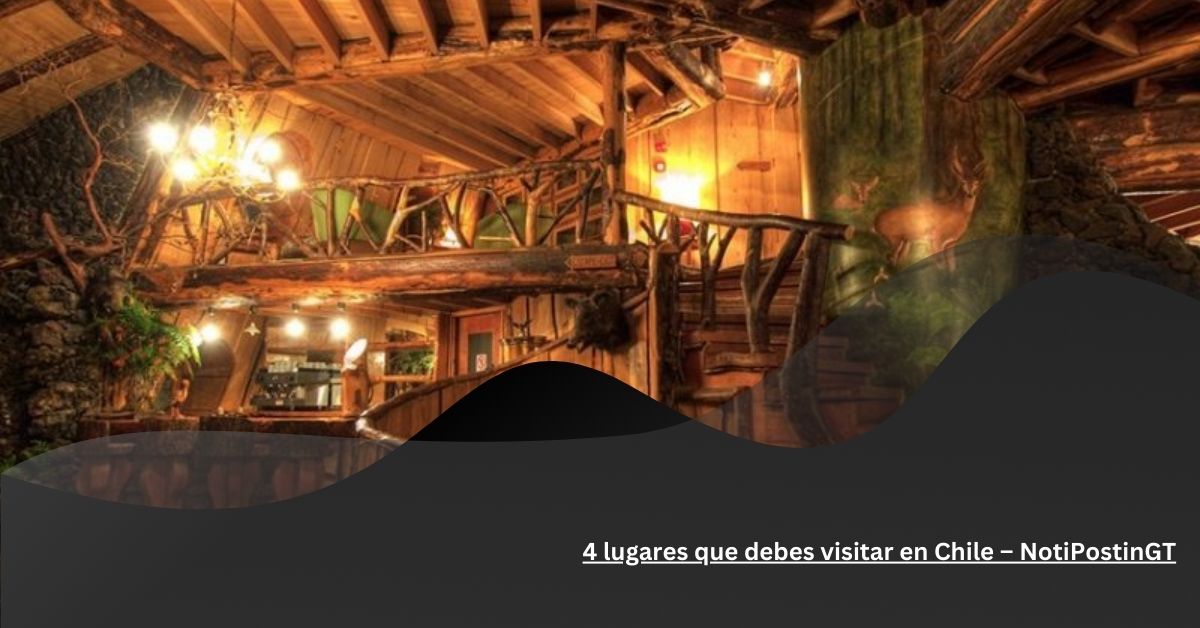Chile, often overshadowed by its neighboring countries in South America, is a treasure trove of natural beauty, rich culture, and unique experiences. Whether you’re an adventure seeker, a history buff, or a foodie, Chile has something to offer everyone. While it may not be the first country that comes to mind when planning a trip, it’s time to change that perception. In this article, we’ll explore four incredible places that you absolutely must visit in Chile, along with insights into the culture, cuisine, and experiences that make this country so special.
1. Santiago: The Vibrant Capital
A Blend of Old and New
Santiago, the capital of Chile, is a bustling metropolis that beautifully combines modern architecture with historical sites. Walking through the streets of Santiago, you’ll encounter towering skyscrapers alongside colonial buildings, creating a fascinating contrast.
Cultural Experiences
Don’t miss the opportunity to visit the Plaza de Armas, the city’s main square, where you can soak in the local atmosphere. Surrounding the plaza are key landmarks such as the Metropolitan Cathedral and the Central Post Office, both showcasing stunning architectural designs.
For art enthusiasts, the Museum of Memory and Human Rights offers a profound look into Chile’s history, particularly during the Pinochet regime. This museum is a poignant reminder of the struggles the country has faced and the resilience of its people.
Culinary Delights
Santiago is also a food lover’s paradise. The city’s culinary scene is vibrant, featuring a mix of traditional Chilean dishes and international cuisine. Be sure to try empanadas (savory pastries filled with meat, cheese, or seafood) and pastel de choclo (a corn pie with a filling of meat, onions, and hard-boiled eggs). Don’t forget to sample Chilean wines, especially from the nearby Maipo Valley, which is renowned for its red wines.
2. Valparaíso: A Colorful Coastal City
A UNESCO World Heritage Site
Just a couple of hours from Santiago lies Valparaíso, a city famous for its colorful hillside homes and vibrant street art. This port city has a bohemian vibe and is a UNESCO World Heritage site, making it a must-visit destination.
Exploring the Streets
Take a stroll through the Cerro Alegre and Cerro Concepción hills, where you’ll find narrow, winding streets adorned with murals and graffiti that tell stories of the city’s history and culture. The Ascensores, or funiculars, are a unique way to navigate the steep hills and offer stunning views of the Pacific Ocean.
Cultural Hotspot
Valparaíso is known for its thriving arts scene. The Museo de Bellas Artes and the Cultural Park of Valparaíso host various exhibitions and performances throughout the year. Make sure to check the local calendar for art fairs and street performances that showcase the talents of local artists.
Gastronomic Experience
The culinary scene in Valparaíso is as vibrant as its streets. The city is famous for its seafood, so be sure to try fresh ceviche or paila marina (a seafood stew). For dessert, indulge in a slice of torta de Santiago, a delicious almond cake that is a local favorite.
3. Atacama Desert: A World of Contrasts
The Driest Desert on Earth
Moving away from the urban scenes, the Atacama Desert offers a stark yet breathtaking landscape that is unlike any other. Known as the driest desert in the world, it is a land of contrasts, with salt flats, volcanoes, and unique rock formations.
Stargazing Paradise
The Atacama Desert is renowned for its clear skies, making it one of the best places in the world for stargazing. The Astronomical Observatory in San Pedro de Atacama provides guided tours for visitors to learn about the constellations and gaze through powerful telescopes.
Natural Wonders
Don’t miss the Valle de la Luna (Valley of the Moon), where the landscape resembles that of another planet. The unique rock formations and stunning sunsets create a magical atmosphere that is perfect for photography.
Cultural Insights
Explore the indigenous culture of the Atacama people by visiting local markets and engaging in community events. You can also learn about traditional practices and crafts, which are an integral part of the region’s heritage.
4. Patagonia: A Nature Lover’s Dream
Breathtaking Landscapes
Patagonia is perhaps one of Chile’s most famous regions, known for its stunning natural beauty. From towering mountains to pristine lakes, Patagonia is an adventurer’s paradise.
Trekking and Hiking
The Torres del Paine National Park is a highlight of any visit to Patagonia. The park offers various trekking routes that cater to different skill levels. The W Trek is particularly popular, offering breathtaking views of granite towers, glaciers, and lush valleys.
Wildlife Encounters
Patagonia is home to diverse wildlife, including guanacos, condors, and the elusive puma. Wildlife tours are available, giving you the chance to see these magnificent creatures in their natural habitat.
Culinary Experiences
Patagonia’s cuisine reflects its natural bounty. Be sure to try asado, a traditional Chilean barbecue, featuring locally sourced meats. The region is also known for its fresh fish, especially salmon, which is often prepared in a variety of delicious ways.
Conclusion:
Chile is a country that surprises and captivates visitors with its diverse landscapes, rich history, and vibrant culture. From the urban allure of Santiago to the stunning natural wonders of Patagonia and the Atacama Desert, there is no shortage of experiences to be had. This South American gem deserves a spot on your travel bucket list, and once you visit, you’ll understand why so many fall in love with its charm.
FAQs:
1. What is the best time to visit Chile?
The best time to visit Chile varies by region. For the northern desert areas, visit between June and August when temperatures are cooler. For the central region, including Santiago, spring (September to November) and fall (March to May) are ideal. In Patagonia, the summer months (December to February) offer the best weather for outdoor activities.
2. Is it safe to travel in Chile?
Yes, Chile is considered one of the safest countries in South America for tourists. However, it’s always advisable to stay aware of your surroundings and take standard safety precautions.
3. What currency is used in Chile?
The currency used in Chile is the Chilean Peso (CLP). Credit cards are widely accepted, but it’s a good idea to carry some cash for small purchases.
4. Do I need a visa to visit Chile?
Visitors from the USA do not need a visa for stays of up to 90 days in Chile. However, ensure that your passport is valid for at least six months beyond your intended stay.
5. What language is spoken in Chile?
The official language of Chile is Spanish. While some people in tourist areas may speak English, it’s beneficial to learn a few basic Spanish phrases to enhance your travel experience.
6. What are some must-try dishes in Chile?
Some must-try dishes include empanadas, pastel de choclo, and curanto (a traditional seafood and meat dish). Don’t forget to sample Chilean wines and pisco cocktails!
7. How can I travel around Chile?
Chile has a well-developed public transport system, including buses and domestic flights. Renting a car is also a popular option, especially for exploring remote areas.
8. What is the climate like in Chile?
Chile’s climate varies greatly by region. The north is arid, the central region has a Mediterranean climate, and the south is temperate with cooler temperatures. Always check the forecast before your trip.
9. Are there any cultural customs I should be aware of?
Chilean culture places a strong emphasis on politeness. A friendly greeting is customary, and it’s polite to address people using titles like “Señor” or “Señora.”
10. What are some popular outdoor activities in Chile?
Popular outdoor activities include hiking in national parks, skiing in the Andes during winter, and exploring the coastline. Adventure sports like kayaking and mountain biking are also popular in many regions.



